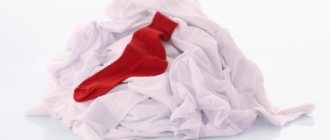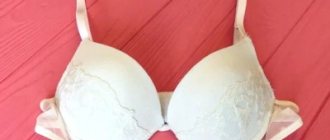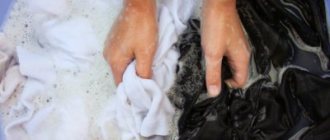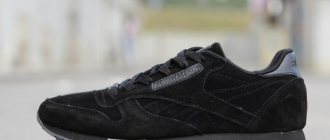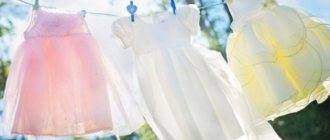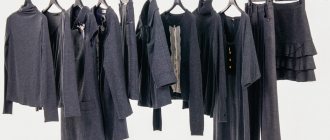White color is popular both in clothing and in interior design. But one of its main disadvantages is the rapid loss of color. After several washes, light-colored items lose their original whiteness, and housewives are forced to buy new ones again and again. Our advice will save you from this need. We have collected all the possible ways to bleach yellowed white things at home.
So, we face the next problem - how to bleach things that have lost their original whiteness in the process of numerous washes. Choose the method that suits you.
We use laundry soap
This is a fairly popular detergent for washing clothes. There are three ways to whiten with this soap.
- Products that have acquired a gray tint from numerous washes can be soaked in a solution of laundry soap before washing. 2 hours is enough. Then the laundry is rinsed and put into the washing machine. You can add an additional rinse to the main wash cycle. This will eliminate the specific smell that such soap gives to things.
- For small products, the following method is good. The item is thoroughly soaped with laundry soap and placed in a plastic bag, from which the air is then removed. The product is left in this form for a day. Then the laundry is washed in the usual way.
- The third method of using laundry soap is only suitable for cotton. To do this, you need to dissolve about a third of a bar of soap in five liters of water (this is convenient to do by grating the soap). The laundry should be boiled in the resulting solution for 60 minutes.
Tips and tricks
To prevent the appearance of yellow stains on clothing, you must follow the following recommendations:
- Use proven washing and bleaching products with a good shelf life. Do not neglect reading the instructions.
- Check the water before washing for visible contamination. Do not wash during plumbing work.
- Monitor the water temperature when washing.
- Use body deodorants in moderation. They must be selected without aluminum in their composition.
- Remove yellow stains from sweat, deodorant and cosmetics as soon as they occur.
If you follow the above recommendations, the likelihood of stains appearing on white clothes will be significantly reduced and you will not have to resort to complex methods for removing them.
Was the article helpful?
Rate the material on a five-point scale!
( 6 ratings, average: 2.50 out of 5) If you have any questions or want to share your opinion or experience, write a comment below.
We use baking soda and ammonia
Baking soda or soda ash is the second most popular means of restoring the whiteness of fabric after laundry soap. Adding a few tablespoons of baking soda to your washing machine can achieve amazing results. Baking soda makes water softer, and soft water enhances the effect of the detergents you use. In addition, by adding soda to the washing machine, you prevent the appearance of hard deposits on its heating elements.
You can enhance the effect of soda with ammonia. To do this you need:
- 10 liters of hot water;
- 10 tablespoons of soda;
- 60 ml of ammonia.
The laundry should be soaked in this solution for two and a half hours. Then you just need to wash the items in a way convenient for you. If the fabric composition allows, this solution can also be used for boiling.
Hydrogen peroxide and ammonia enhance the effect of soda when bleaching things.
In addition, baking soda can also be used in combination with hydrogen peroxide. This composition is suitable for bleaching delicate fabrics. To prepare it use:
- 3 liters of water;
- 15 ml hydrogen peroxide;
- 1 teaspoon of soda.
You need to place things that need to be restored to whiteness in the resulting solution for 30 minutes.
Why do yellow spots appear after washing?
There are many reasons why marks appear on clothing. Let's look at the most common ones.
Problem with detergent
Special powders and liquids for washing can have a negative effect on things:
- A low-quality detergent reacts with water and leaves unpleasant yellow stains on things.
- Failure to meet expiration dates. The period of use of the detergent has its limitations. Since laundry detergents are a mixture of various chemical components, failure to comply with their expiration dates leads to unpleasant results. In this case, it is likely that white spots will appear on dark clothes and yellow spots on white underwear.
- Failure to comply with the dosage of washing powder. Its improper use leads to the appearance of yellowness. Excess powder is not washed out and settles on the fabric, causing the need for re-washing.
The problem is in the water
Poor quality water can also cause yellowing of clothes:
- Increased water hardness can cause yellow spots. You can find out the hardness of water by the formation of limescale on the heating element of a washing machine or in a kettle.
- High levels of iron in water. Even if yellowness was not immediately noticed, it may appear during the process of drying things. Iron reacts when exposed to sunlight.
- Carrying out plumbing work during washing. Often, special utility services carry out work related to checking pipes. This can allow dirt and rust to enter with the water.
- Using water that is too hot helps fix existing yellow discoloration.
The problem is poor quality washing
If white items have stains from makeup or sweat, they may well remain after washing. This is due to the wrong way to remove them. In some cases, the yellowness may intensify and penetrate deeper into the tissue.
We use hydrogen peroxide and ammonia
To remove yellowness from white fabrics, another available product is often used - hydrogen peroxide. The popularity of this product is high not only due to its effectiveness, but also due to its careful treatment of fabric. With the help of hydrogen peroxide, even delicate fabrics, such as silk, can be restored to their former whiteness. In addition, this remedy is popular among young mothers, since solutions prepared on the basis of this substance usually do not cause allergies.
So, what do you need to remove yellow stains from fabric with hydrogen peroxide?
- 5 liters of hot water (for cotton fabrics the water temperature should be 70 degrees, for delicate ones – 30 degrees is enough);
- 25 ml of hydrogen peroxide (about 3 tablespoons);
- 25 ml of ammonia.
Place items that need to be white again in the resulting solution and leave for 30–60 minutes. Then rinse the laundry first in warm and then in cold water.
If you use this method to bleach delicate fabrics and the water temperature does not exceed 30 degrees, then you can add a couple of tablespoons of washing powder to the solution and increase the exposure time to 2-3 hours.
When using this method, follow several important rules.
- Firstly, make sure that the items are completely in the solution, otherwise there may be stains where things floated to the surface.
- Secondly, the laundry needs to be stirred several times to avoid uneven bleaching.
Why things turn gray and yellow, and what to do about it
If you think that white things always lose their brightness soon after purchase, then you are mistaken. Yellowness and grayness are a consequence of improper care, but not a property of fabrics. Why things get spoiled:
- due to frequent wear,
- irregular washing,
- washing with colored clothes,
- poorly selected detergents and bleaches,
- neglecting bleaching powders,
- lack of knowledge of the rules for caring for delicate fabrics.
At home, it is always easy to extend the life of your favorite shirts and blouses. Moreover, not only industrial bleach will help, but also many products that every housewife can find:
- hydrogen peroxide,
- ammonia,
- laundry soap,
- potassium permanganate,
- soda,
- table salt,
- citric acid, etc.
Please note that specific methods are suitable for each fiber. Let us further consider folk remedies for whitening clothes, industrial products for maintaining whiteness, as well as the rules for using all substances.
We use table salt
Table salt is an excellent bleaching agent.
Good results can be achieved using regular table salt. To prepare the solution you need:
- 10 liters of hot water;
- 2 cups salt;
- 70 ml of ammonia;
- 400 ml hydrogen peroxide.
It is necessary to keep things in such a solution until the desired result is obtained. As soon as you see the result, rinse and dry the products.
Special products
What the chemical industry offers us:
- Oxygen-containing bleaches are the safest compared to other similar products. Oxygen-based gels, powders and tablets are produced. The mild action of the product justifies the high cost.
- Chlorine-containing bleaches. Sodium hydrochloride is a rather aggressive agent. It is used only on durable fabrics; no products are provided for synthetics. If chlorine is used frequently, yellowing will appear. Such pollution can no longer be removed. The main reason for purchasing chlorine-based products is quick results and low price.
- Optical brighteners have luminescent components that reflect light and create the appearance of whiteness.
Rules for washing white clothes
To keep bleached items white longer, use simple rules.
- Wash white items separately from other items. It's not just that colored items can stain light-colored fabric. As a rule, white laundry is less dirty than dark clothes. And even if things don’t stain the water, dirt from them can get into the fibers of the white fabric and the laundry will take on a gray tint.
- Also divide things by fabric type. Cotton and linen fabrics respond well to washing with chlorine bleach at a temperature of 60 degrees. But all other fabrics are unlikely to withstand such aggressive washing.
- Keep your washing machine clean. From numerous washes, dirt accumulates on the drum or behind the rubber seals, which can give white items a gray tint.
- If you have hard water in your region, be sure to add softening agents every time you wash – they will get rid of the yellow coating on your clothes.
By following these simple rules, as well as using the given recipes for whitening things at home, you will remain the owner of truly white things for a long time!
How to prevent yellowing of things: advice from experts and housewives
To reduce the likelihood that items will turn yellow when stored in a closet, follow these simple guidelines. Do not hang worn clothes together with clean ones, even if you have worn them once. Separate dirty laundry by color and type of fabric. Items that do not require the use of hangers are best stored in vacuum bags. This approach prevents the oxidation of fabric fibers and prevents the appearance of yellowness.
If you decide to iron your items, read the information on the label.
It is strictly forbidden to use the steam mode when the water in the iron is stagnant. The shelves in the closet can be covered with plastic film. Children's, seasonal, outerwear, bed linen - everything is stored in different isolated sections. The cabinet needs to be ventilated periodically. By following these simple steps, you can prevent your items from turning yellow over time.
How to whiten baby clothes
A child’s clothing should not be exposed to aggressive influences: if substances remain in the fabric structure, they can cause an allergic reaction. Avoid chlorine-containing bleaches. There are special gentle products on sale for the care of white children's clothes up to 3 years old. They are hypoallergenic and do not contain harmful components.
What methods are it permissible to return the whiteness to washed children's clothes:
- boiling,
- ammonia,
- hydrogen peroxide,
- baking soda.
The key point: rinse thoroughly to remove the smallest particles of bleach from the material.
Wash them and take care of them beforehand
Make sure you only store freshly washed clothes. Firstly, stains are removed much easier the sooner they are treated, and unwashed clothes attract parasites. Of course, clothes must also be completely dry. Also, of course, there should be no holes in the clothes. Take care of such minor defects before storing them.
You'll be glad at the start of next season when the items are immediately wearable without the need to wash and care for them first.
What should you avoid?
Also keep in mind that if you store things properly, they will not get wrinkled and therefore save you extra time.
This also applies to multi-layered clothes on a hanger. You need to fit a maximum of 5 items of clothing, but the less you need, the better for you. The hangers won't be as busy, so you can easily reach the parts you need. Also beware of moths. There are pest control chemicals, but they usually don't smell very good. But you can also do it in a natural way - with lavender, cinnamon or orange zest. Just put them in a breathable bag and throw them in the wash.
When dealing with pests, you need to pay attention to mold, which is abundant, especially in recently insulated apartments or in less ventilated areas. If mold is already present in your warehouse and it ends up on clothing, nothing is lost. The only effective solution against mold is frequent ventilation.
Denatured alcohol + ammonia
A very strong, aggressive stain remover that is perfect for natural fabrics with a dense structure.
However, denatured alcohol in combination with ammonia is not used for processing synthetic, silk, wool, and delicate white items.
A stain remover from two alcohols is prepared in a 1:1 ratio. Mix thoroughly and apply to yellowed areas of fabric. After half an hour, rinse and wash in soapy water.
Denatured alcohol, but without ammonia, is used in combination with chicken egg yolk to remove sweat stains from white shirts. The algorithm of actions does not change.
Vinegar essence
To remove deeply ingrained, old yellow stains on thick cotton fabric, this method is useful:
- Pour vinegar essence into the yellowed areas.
- Leave for a minute.
- Rinse the product in cool water.
- Wash.
For finer white fabrics that require gentle handling, other cleaning methods can be used. For example, dilute a teaspoon of vinegar essence in a glass of water, wet a sweat stain with the solution, and rub with a sponge. Leave for 1.5-2 hours, rinse, wash. If there is no vinegar, citric acid will be a substitute.
Another option for using vinegar to remove yellow stains from white clothes: dilute 9% table vinegar with water in a 1:1 ratio, moisten the cloth in the right places. After a few minutes, wash. The same can be done with vodka or any other strong, colorless alcohol.
Don't put too much in one box
Clothes should not be stored completely compressed. As a result, some items of clothing may lose their shape. Protect your shoes from deformation by stuffing them with newspaper or using a special shoe stretcher. If you store clothes vertically in a box using the file folding method, you can see what's inside at a glance, and if you feel the need for a thicker sweater on a cool summer evening, you can still quickly get it out of the box.
How to save jeans?
It will not be possible to revive denim fabric if the bleach has become deeply ingrained. A small spot is painted over with a pencil, pen, or felt-tip pen. If the affected area is large, then the only option is to reclassify the jeans as “dumplings.”
Cover the stain with applique
To do this you will need whitening powder and water. Heat a bucket of water to a boil, add the powder, cook the jeans rolled vertically in the mixture for about 15 minutes. After the procedure, jeans should be rinsed in cold water. Dyeing is not recommended: if most of the item is damaged, it may be uneven.
An excellent solution is to disguise the stain with an applique or patch, pocket or patch, or make torn holes. It all depends on the style of the product.
How to wash white clothes by hand?
As for the temperature, when washing by hand, it should not exceed 60 degrees so that you do not burn your hands. Before washing, you need to soak white items for several hours in hot water with the addition of laundry soap, after which you can start washing.
Interesting materials:
How to plant onion sets correctly? How to plant hyacinths correctly? How to plant chamomile seeds correctly? How to do the splits correctly? How to form a desire correctly? How to wash off paint correctly? How to properly preserve grape seedlings? How to properly store beets for the winter? How to create an email correctly? How to sleep on a bed correctly?

